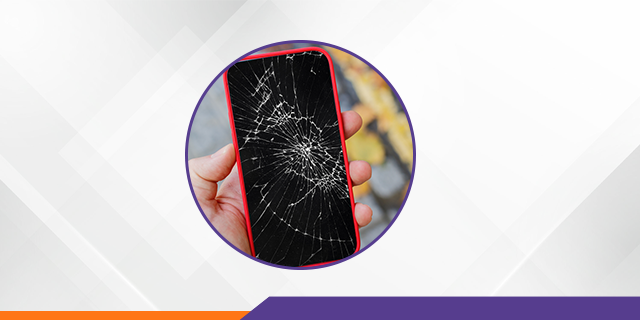Your iPhone isn’t just a gadget—it’s an investment. But as sleek and durable as Apple designs are, iPhone screens remain vulnerable to drops, scratches, and cracks. Repairing or replacing a damaged iPhone screen can be costly and time-consuming, which is why prevention is key.
Whether you’re rocking the latest iPhone 15 or an older model, these 10 practical tips will help you protect your screen and avoid frequent damage.
1. Invest in a High-Quality Screen Protector
The first line of defense for your iPhone screen is a good-quality screen protector. Opt for tempered glass or liquid screen guards, which offer superior impact resistance and scratch protection. Tempered glass protectors can absorb shocks and cracks, leaving your original screen untouched.
Look for screen protectors that are case-friendly and come with features like anti-glare, anti-fingerprint, and blue light filtering for added eye comfort.
2. Use a Protective Case with Raised Edges
Not all phone cases are created equal. To minimize screen damage, use a case with raised bezels that protect the screen when your phone is face-down or falls on a flat surface. Shock-absorbing cases made from TPU, polycarbonate, or silicone offer excellent drop protection.
Cases with military-grade drop protection are especially recommended if you’re frequently on the go or have a history of drops.
3. Be Mindful of Where You Keep Your iPhone
Avoid tossing your phone into your bag or pocket with keys, coins, or other sharp objects. This is one of the most common causes of micro-scratches on the screen.
Instead, use a dedicated phone pocket, sleeve, or a pouch when carrying your iPhone in a backpack or handbag.
4. Avoid Using Your iPhone with Wet or Dirty Hands
Moisture and dirt not only affect your phone’s functionality but can also make it slippery, increasing the chances of dropping it. Clean hands ensure a firmer grip, and dry fingers work better with touchscreens.
Also, avoid using your iPhone in the bathroom or near pools where water and moisture exposure is higher.
5. Don’t Leave Your Phone on the Edge of Surfaces
It’s tempting to leave your iPhone on a desk or kitchen counter, but placing it near the edge of a surface is a recipe for disaster. One accidental nudge and it could be on the floor, screen down.
Instead, place your phone safely in the center of a table or on a soft surface to minimize accidental falls.
6. Be Cautious During Physical Activities
If you often take your iPhone on runs, to the gym, or during biking or hiking, make sure it’s secured in a sports armband, belt clip, or a zippered pocket.
Avoid holding your phone in your hand during physical activities, as this increases the risk of it slipping out or getting knocked down.
7. Avoid Extreme Temperatures
Exposure to high heat or freezing temperatures can make the glass more brittle, increasing the chance of it cracking with even minor impacts. Try to avoid leaving your iPhone in hot cars, under direct sunlight, or in very cold environments for prolonged periods.
Temperature swings can also cause internal stress on the screen, leading to micro-fractures that worsen over time.
8. Don’t Sleep with Your Phone on the Bed
Many people charge their phones overnight on the bed, but this increases the risk of rolling over it or pushing it off the edge. If it falls from your bed or gets crushed under your body, the screen might not survive.
Place your iPhone on a nightstand, charging dock, or use a bedside shelf to keep it safe and within reach.
9. Practice Safe Charging Habits
Cheap or incompatible charging cables can lead to electrical surges or overheating, which in rare cases can damage the screen from the inside. Always use Apple-certified accessories (MFi-certified) and ensure your charger is in good condition.
Also, avoid charging in precarious locations where the cable might pull the phone off a table or nightstand.
10. Stay Updated with iOS and App Settings
While this may not seem related to physical screen damage, software glitches and unresponsive touchscreens can cause frustration and lead to careless handling, increasing the risk of dropping your device.
Make sure your iOS is up to date, recalibrate your screen occasionally, and use AssistiveTouch or haptic feedback settings to reduce strain on the hardware.
Bonus Tip: Consider Phone Insurance or AppleCare+
Even with all the precautions, accidents can still happen. That’s where AppleCare+ or third-party insurance can be a lifesaver. They may cover screen repair or replacement at a much lower cost than out-of-warranty fixes.
It’s worth the peace of mind, especially if your phone is new or you tend to be accident-prone.
Final Thoughts
A cracked iPhone screen isn’t just a cosmetic issue—it can affect usability, touch sensitivity, and even your phone’s resale value. Taking preventive measures can significantly extend the life of your iPhone and keep it looking new.
By following these simple but effective tips, you can minimize the risk of screen damage and enjoy a worry-free smartphone experience.
Need a screen replacement or repair?
Check out professional services and accessories at https://hellore.in to keep your iPhone in top shape!


